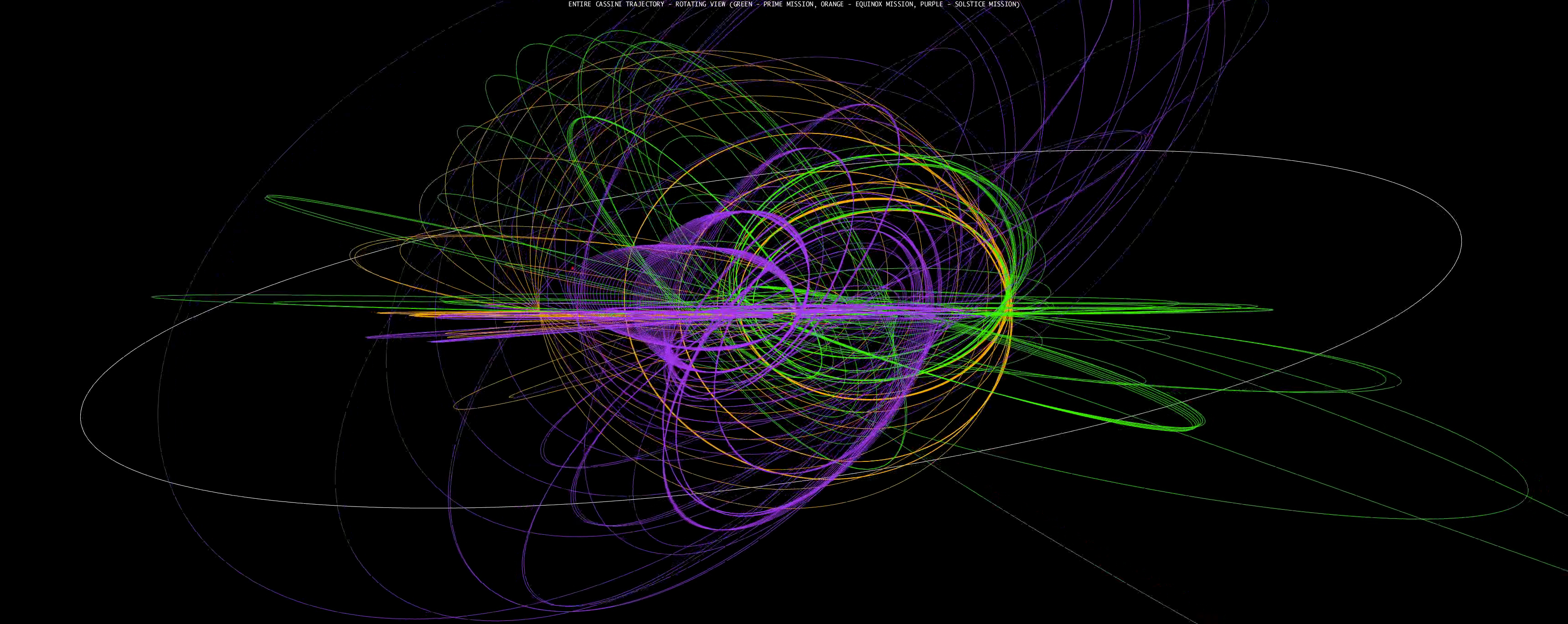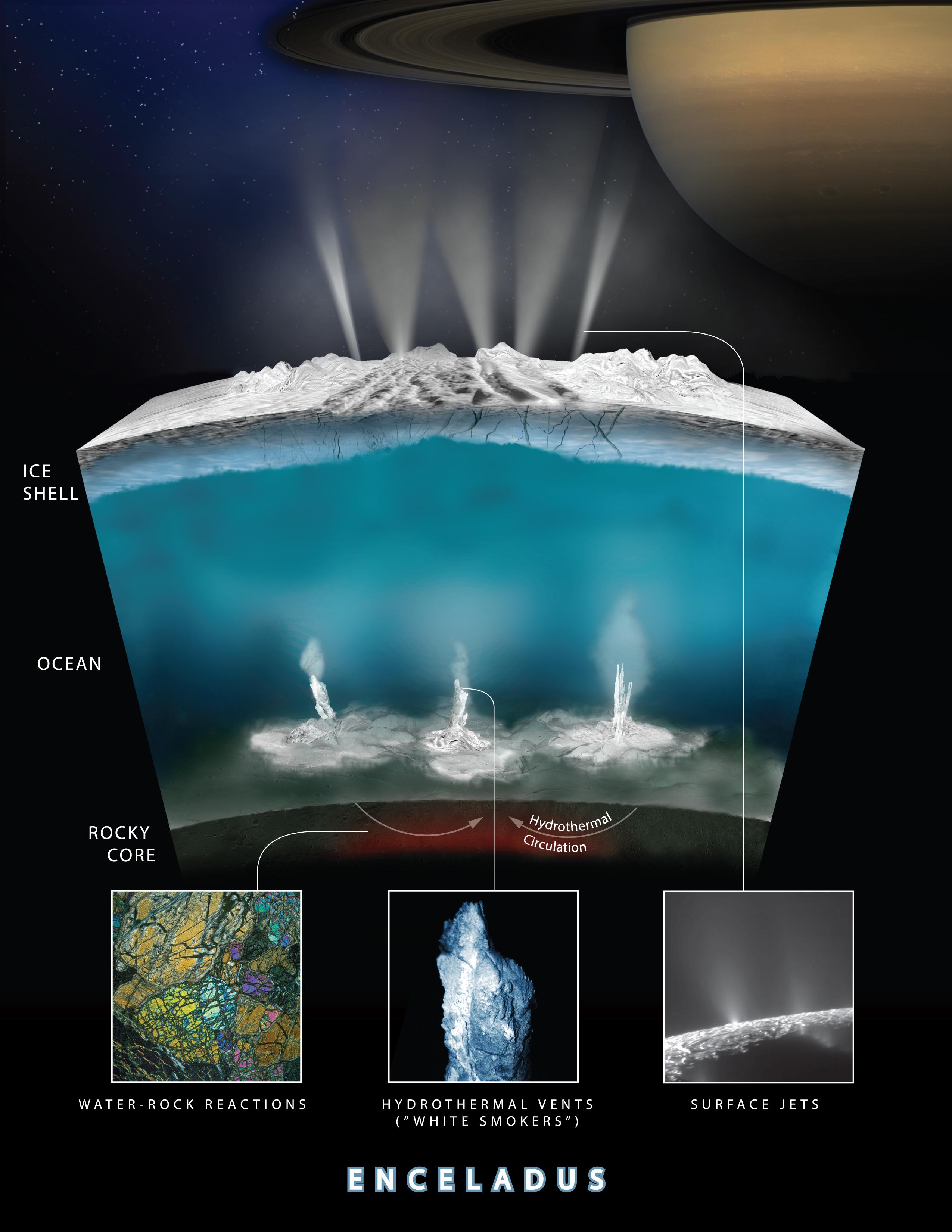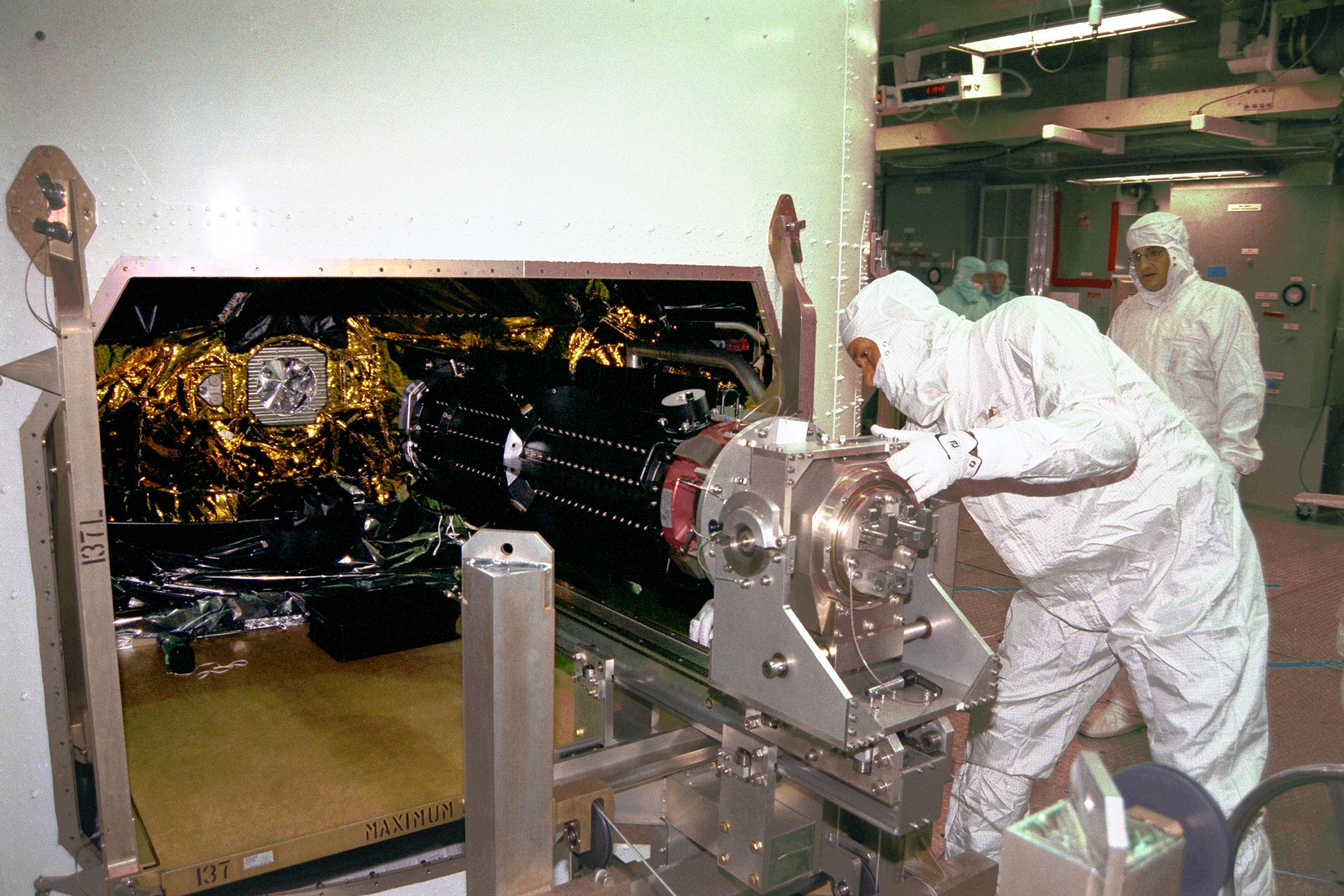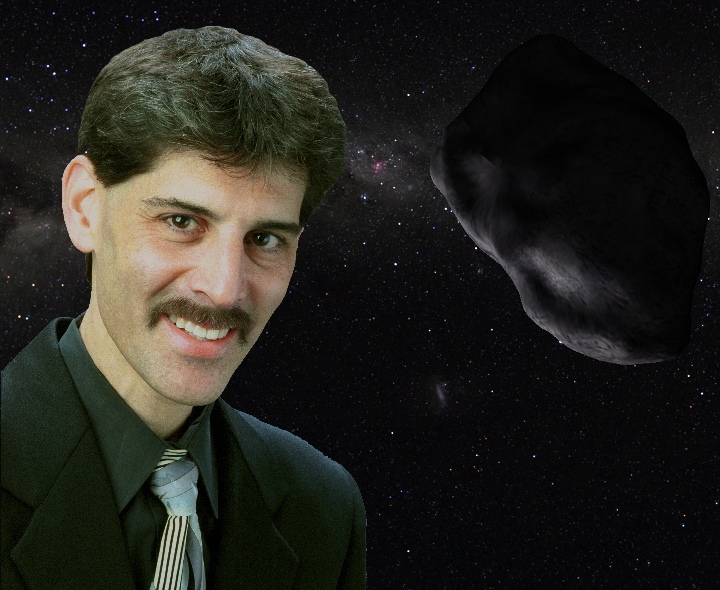
Why Kill Cassini? Saturn Probe's Fate Carefully Considered
On Sept. 15, 2017, at 8:08 a.m. EDT (1208 GMT), controllers at NASA's Jet Propulsion Laboratory in Pasadena, California, expect to receive the last signal from the $3 billion Cassini-Huygens mission. When the signal stops, humans on Earth will know that the spacecraft has met its end as a streak of debris across Saturn's sky.
Cassini will be intentionally deorbited into Saturn's atmosphere. The probe — a joint effort of NASA, the European Space Agency and the Italian Space Agency — will sacrifice itself to prevent an accidental crash that could contaminate one of the Saturnian moons where native life may exist, or may someday evolve. Cassini discovered a liquid-water ocean under the icy surface of the moon Enceladus and, perhaps a victim of its own success, must die to prevent any chance that its warm electric generators might melt their way down into those life-friendly waters. But the judgment to condemn the spacecraft was not made lightly. [Latest Saturn Photos by Cassini]
Deciding Cassini's fate
In 2009, with the primary mission complete and a completely healthy spacecraft well into a 27-month extended mission, Cassini managers looked at a variety of "what next?" options. Trajectory modeling showed that Cassini could have been sent on to survey the "ice giant" planets, not visited by a spacecraft since Voyager 2's quick flybys of Uranus in the winter of 1986 and Neptune in the summer of 1989.
Alternatively, Cassini could have been directed back inward, to explore giant Jupiter and its many moons, rounding out science started on NASA's Galileo mission in 1995. Galileo's large high-gain antenna had never unfolded properly, dramatically lowering the sum of data the spacecraft could send home. Galileo was purposely deorbited into Jupiter's atmosphere in September 2003, to prevent accidental contamination of the wet moon Europa, a precursor of Cassini's end at Saturn. (NASA's Juno mission is now gathering data during repeated close flybys of Jupiter's cloud tops.)
Or, Cassini could have been dispatched outward to investigate a few of the Centaurs. These are large, comet-core-like bodies inhabiting the region between the orbits of Jupiter and Uranus. Centaurs are likely similar to Kuiper Belt objects, such as the dwarf planet Pluto and its very large moon Charon, considered residents of the so-called Third Realm of the solar system.
But Saturn's unresolved scientific mysteries kept Cassini's handlers enthralled. So, in 2010, the mission team developed an innovative, intricate orbital campaign to extract as much science as possible from the Saturn system. [Cassini's 'Grand Finale' at Saturn: NASA's Plan in Pictures]

This clever blossom of gravity and inertia — termed the solstice mission — let researchers investigate the changes of Saturn's seasons, ultimately watching the planet change through half of its year. (A full year on Saturn is nearly 29.5 "Earth years" long.) By watching both of the planet's hemispheres, the science community witnessed all four seasons in only half of Saturn's solar orbit.
Get the Space.com Newsletter
Breaking space news, the latest updates on rocket launches, skywatching events and more!
Death spiral for science
That extended stay at Saturn meant Cassini would someday run out of rocket propellant and drift out of control. To maneuver, Cassini carefully places monomethyl hydrazine in contact with nitrogen tetroxide, which spontaneously oxidizes (burns) it. There's only one way out: through the rocket nozzle. This produces vectored thrust.
Looking ahead to the day the onboard stores of these "hypergolic" chemicals would be nearly depleted, mission managers decided upon a final "death spiral" set of orbits. This looping "Grand Finale" would let Cassini sail between Saturn's cloud tops and its innermost rings — unknown territory considered too risky to explore earlier in the mission. The plan is for Cassini to execute 22 of these daring dives through the gap. (As of July 17, Cassini had completed 13 such plunges.)
Us or them?
Planetary protection works both ways: The probability of infecting another world with microbes from Earth cannot ever be zero. Likewise, the possibility of bringing a non-native "bug" home to Earth on a returning spacecraft cannot be eliminated. Some scientists argue that material has jumped from planet to planet since the beginning of the solar system and so there's no need to worry. Others are deeply concerned about unintended consequences.
The Cassini-Huygens mission launched 20 Earth years ago. In those two decades, there has been a shift in the planetary science community's attitude toward greater caution where the possibility of cross-contamination exists. This view is not based primarily on the altruistic goal of allowing possible alien biology to develop along its own course (although some scientists do subscribe to that idea). The broader rationale affirms that it's vital to know if any extraterrestrial life — which may be discovered on a moon or a planet or a comet someday — arose from an independent origin.
It does not matter whether it's a complex critter or simple microbe: If an alien does not use the same class of biomolecules that Earth life does (DNA, for example), its evolution was almost surely separate from that of Earth — a true "second genesis." But if it shares a similar genetic makeup, then either we had a common origin (likely somewhere else in space), or our spacecraft have contaminated the sample, and we'll never know for sure. This latter case is the nightmare scenario for astrobiologists.
Cassini carried and dispatched the Huygens probe, which landed softly on the surface of Saturn's largest moon, Titan, in January 2005. When Cassini and Huygens were designed and built in the 1990s, there was little suspicion that the Saturnian moons could have life-supporting environments. There was little concern that the Huygens probe could contaminate Titan's methane-rich surface. No water oceans were known in the Saturn system at that time. [Landing on Titan: Pictures from Huygens Probe on Saturn Moon]
Cassini itself later found that Titan might encompass such an ocean under its surface. And the tiny "snow globe" moon Enceladus almost certainly encloses one. Well, almost encloses: Enceladus sprays geysers of water ice out into space, some of which settles back down to the moon's surface in the form of snow, making it the most reflective planetary object in the solar system.
With Cassini's findings — and discoveries by the Phoenix Mars lander, the Mars Global Surveyor and the Mars Reconnaissance Orbiter, which spotted signs of transient liquid water on the present-day Red Planet — a more rigorous set of guidelines governing planetary protection was issued by the international Committee on Space Research (COSPAR) in 2009. COSPAR is empowered by Article IX of the United Nations Outer Space Treaty. These rules placed Enceladus, along with Mars and Jupiter's moon Europa, squarely on the list of bodies upon which biologic contamination should not be allowed. Each of those worlds was deemed to be a place where "contamination carried by a spacecraft could jeopardize future exploration." Each had natural processes by which "bugs" arriving on landers — or crashers — could find their way to habitats where microbes could survive and reproduce.

As if to seal the case, in early 2017, Cassini discovered silica grains and hydrogen gas in the ice plumes above Enceladus, indicating there must be hydrothermal vents on the floor of the subsurface ocean. Such vents on Earth have proved to be oases for life, dispensing heat, nutrient chemicals and mixing currents. These "black smokers" and "white smokers" support rich communities of organisms, almost completely isolated from others by many miles of barren ocean.
The warm way down
Certain parts of Cassini's internal plumbing and other systems are purposely kept warm; hitchhiking bacteria could have remained protected from extremely low temperatures. There is strong evidence that some bacteria can survive strong ultraviolet light from the sun and other space radiation. (A well-known claim, dating from the 1969 Apollo 12 mission, that Earth bacteria could return to life after more than two and a half years on the harsh moon turns out to be almost impossible to replicate due to the laboratory practices the scientists employed at the time.)

Cassini gets its electrical power from three radioisotope thermal electric generators (RTGs), which translate the heat of decaying plutonium dioxide. These RTGs are hot and heavy. RTGs can't be cooled except by their own radioactive decay; plutonium-238 has a half-life of nearly 88 years. If the craft were to crash on the surface of a cold moon like Enceladus, the RTGs could easily thaw a path through tens of kilometers of ice, and plop down into the liquid water ocean beneath, though this might take a long time.
Best of intentions
Space agencies hire microbiologists to keep records and samples of bacteria that can survive in clean rooms where spacecraft are assembled. The idea is to carefully limit — and specifically list — the species that could sneak aboard. If life is found in space, it must be checked against this gang of usual suspects before it can be declared as extraterrestrial.
There is also the chance that stringent spacecraft sterilization could actually be encouraging the evolution of microbes that are hardier and more resistant to the hard vacuum, wide temperature swings and harsh radiation conditions of space. It is remotely possible that, in the name of planetary protection, we are making the effects of cross-contamination worse.
For a deeper look into all that Cassini found in its 13 years in the Saturn system, watch "Kingdom of Saturn – Cassini's Epic Quest," a 73-minute documentary available on Amazon Xive-TV.
The author, @DavidSkyBrody, is the writer and director of "Kingdom of Saturn – Cassini's Epic Quest," a documentary that look back at the mission available at Amazon Xive-TV. Brody was formerly executive producer at Purch, the parent company of Space.com and LiveScience.com.
Follow this author @DavidSkyBrody. Follow us @Spacedotcom, Facebook and Google+. Originally published on Space.com.
Join our Space Forums to keep talking space on the latest missions, night sky and more! And if you have a news tip, correction or comment, let us know at: community@space.com.
Dave Brody has been a writer and Executive Producer at SPACE.com since January 2000. He created and hosted space science video for Starry Night astronomy software, Orion Telescopes and SPACE.com TV. A career space documentarian and journalist, Brody was the Supervising Producer of the long running Inside Space news magazine television program on SYFY. Follow Dave on Twitter @DavidSkyBrody.










